By the time we boarded the Hokuriku Shinkansen to Nagano, my mother, who was visiting from America, had been touring Japan for three weeks. She had eaten the freshest seafood caught off the coast of Hokkaido. She had hiked among the lush forest and waterfalls of Aomori’s Oirase Gorge. She had basked in the presence of awe-inspiring Toshogu Shrine among the full autumn foliage. Perhaps she had reached maximum capacity for being impressed by Japan, I wondered.
We were headed for Iiyama, a lovely city just north of Nagano city that joined the “Shinkansen Station Club” in March 2015 on the Hokuriku line. Before then, Iiyama stood in the shadows of nearby Nozawa Onsen, an area famous among tourists for its winter sports and hot springs, but now, Iiyama is making its presence known to the world as a destination. I had come to know and love Iiyama from my visit last year, but would this low-key, down-to-earth city be enough to impress my mom?
We glided into Iiyama Station with the late afternoon sunlight pouring through the station windows, where our host, Shibata-san, met us at the ticket gate with a friendly wave. She whisked us into the Iiyama Tourism Center on the first floor of the station, where visitors can pick up an array of brochures in many languages, get help or advice from the staff, or shop for locally made crafts and souvenirs. Then we went next door to the Shinetsu-shizenkyo Activity Center for a brief overview of the cycling tour I was scheduled to take the following day. Then it was off to our accommodations at Kanoe, stopping to enjoy the view of the valley along the way.
A Cycling Tour of Northern Nagano
The following afternoon after a lovely time spent with our hosts at Kanoe, my mother and I returned to Iiyama Station for my cycling tour. While I rode, my mother made herself comfortable in the welcoming Tourism Center, which has many places to sit and relax. She purchased a few postcards from the rack and began writing notes to her friends.
Meanwhile, next door at the activity center, a small group of us gathered around Kouhei Nishida, our cycling tour guide for the day. Kouhei is a licensed English guide as well as a trekking guide, and he is very familiar with the area having lived here for several years. After receiving instructions, donning our safety equipment, and taking a few practice laps around the plaza outside, we headed off on our grand adventure.
Our cycling tour was a 15 kilometer (approx. 10 miles) ride over relatively flat terrain that takes about three and a half hours with stops for breaks and photos. At that pace, it is pretty much suitable for anyone competent with riding a bicycle, though some sections ride along highways with fast-moving traffic, so small children are not recommended to ride alone. Wherever possible, Kouhei takes care to keep to the less-trafficked country roads, which are not only safer but much more picturesque than the highway.
The route crosses over the Chikuma River, the longest in Japan, using two different bridges. We paused on the first bridge to survey the damage done the month before when Typhoon Hagabis ravaged much of Japan. The Chikuma swelled to wash out some minor farmland along its path but, thankfully, did not break through the levy in this area. The rest of Japan can be grateful as well, as this area produces some of Japan’s most exceptional autumn harvests, from crisp apples to buckwheat used for soba noodles.
We rode through tiny neighborhoods where you could imagine invisible cat buses zipping to-and-fro through broad rice paddies and along power lines. We rode along the edge of mountains dappled with trees of red, yellow, and green. We rode next to streams of clear water, emerging from hidden springs to give the valley its source of life.
Halfway through, we paused on a hill, watching the sunlight grow warmer on the eastern mountains, and our shadows grow longer. At each stop, members of our group were offered a chance to try out an electric-assist mountain bike for a leg of the tour. If you want, you can ride a similar bike for the entire ride for an additional 2,000 yen, though there are other options for electric-assist on-road bikes as well.
On the final leg of the tour, we rode through part of Iiyama city, pausing to visit a few of the many temples hidden among its streets. At this time of year, November, many of the temples are exploding with fall colors, so I made a note to spend time seeing more of them the next day before we caught a train back to Tokyo.
The Shinetsu-shizenkyo Activity Center offers several options for guided cycling tours like the one given by Kouhei, both on-road and off. It is also possible to rent a bicycle here and go at your own pace or to your own destination. Sample routes and itineraries are available at the center or check the website for suggested routes.
Picking Sweet Fresh Apples from the Orchard
The next day, we had several hours of free time before heading back to Tokyo, so we decided to make the most of it. Dropping our luggage off at the Iiyama Station coin lockers, we asked for some recommendations at the Tourism Center desk to complement our plan to visit the local temples. It turned out that it was the perfect time for apple picking and there was an apple orchard within a 10-minute walk from the station. And, since we would be in the neighborhood for our temple walk, we might want to visit the small but excellent Mayumi Takahashi Doll Museum.
At Shiozakino Orchards (Japanese website), 600 yen gets you admission and all-you-can-eat apples. An additional 1,100 or 1,600 yen gets you a small or large bag, respectively, in which you can take home as many apples as will fit. In our large bag, we could comfortably get six apples into it, maybe more if you don’t pick the largest apples off the trees.
So let’s be honest here; has anybody become giddy over the prospect of picking apples? Apart from the class of gleeful first graders who burst into the orchard after we arrived, I hardly think so. But bear with me here, because picking apples in Nagano is truly an experience.
First of all, there’s the size of the apples here. These are two-handed apples, not the petite fruit at your local supermarket that are 50% core. Next, there’s the perfection. Now granted, apples in orchards open to the public like this aren’t going to be the same as the ones growing in orchards bearing $25 apples grown on pillow-tops and wrapped in warm blankies on chilly nights. But apart from minor blemishes and occasional sampling by a discerning bird, these are some gorgeous looking fruit.
Oh, but then there’s the taste, right off the tree. Three types of apples were in season during our visit: Fuji, Shinano Gold, and Meigetsu. Most people have heard of Fuji apples and have probably tried them. They are crisp and sweet with a slight tartness, but not too tart. Shinano Gold, a prevalent type of golden apple from this area, is almost perfectly balanced between sweet and tart. Meigetsu, another golden apple which I dubbed my favorite of the three, is a sweet apple. I doubt that I have ever tasted an apple sweeter than a Meigetsu. This is an apple that would make a caramel apple taste bland.
Lastly, there is exceptionally entertaining apple peeler, loaned to paying customers. Outside of Japan, I have never seen a device quite like this, and I swear there must be some voodoo involved in it because it peels an entire apple in a single strip of peel in less than 10 seconds, every time. I forced myself to eat more apples so that I could try peeling another one! My mother was so impressed with its magical abilities that she bought one from the shop to take home. In case you’re wondering, it comes as a set with a corer/slicer for just 1,500 yen.
My recommendation is that at least one person in your party should get a bag of apples to take home. All-you-can-eat apples is something that sounds like a great idea at the time, but ask yourself: when is all-you-can-eat anything a great idea? And frankly, these apples are so large that it would be challenging to eat more than one, so who wants to pay 600 yen for a single apple?
Exploring Iiyama’s Temples and Museums
After dropping our heavy bag of apples back at the station, we headed north toward the central part of Iiyama City, its temples, and the Mayumi Takahashi Doll Museum. This little museum pays homage to hometown artist Mayumi Takahashi and her collection of handmade dolls set up in miniature scenes and dioramas.
No photography is allowed inside the museum, so it is probably best to visit the website to decide if this is the sort of place that would interest you. Although I am not a big fan of dolls, Ms. Takahashi’s creations ring so sincere with emotion and representation of authentic life in the Japanese countryside that it is easy to appreciate her work. 30 to 60 minutes is sufficient time to browse this small museum and there is a cafe nearby with food and drink if you are feeling like a little pick-me-up before continuing your exploration of Iiyama city.
On the west side of Iiyama’s main street in the foothills of the mountains, over 20 ancient temples and shrines are among the trees and other buildings of the city. Iiyama was once a castle town; the remains of Iiyama castle are in a park just a few minutes’ walk from the doll museum. The castle stood on a small hill, from which the entire landscape, including each of the temples, could be surveyed continuously. The temples themselves are loosely connected by an ancient path called the tera meguri houdou. Today, the path is well defined and maintained, though you might have to do a quick visual search to locate it again whenever you cross a major street.
The many temples and shrines are in various states of maintenance but each has its own unique beauty. Not to be missed in the autumn season are Saikyoji, with lovely maple trees framing its grand entrance gate and bell tower, and stately Shonenji, which has a courtyard covered in bright green moss over which a canopy of red, orange and yellow leaves shine in the morning sun.
It would take several hours to walk to each of the temples, but you can easily see the main ones in less than two hours. The tera meguri houdou ascends a long flight of stairs at Ise Shrine, which is where my mother decided to call it quits. It was a smart call as even I, at more than 25 years her junior, was left breathless at the top of the stairs.
Riding home on the Shinkansen, my mother announced without any prompting that Iiyama was the most enjoyable part of her trip to Japan. Given the breadth of the places she had visited and things she had done, I took that as high praise of this little city, a city that has over the past year captured my heart as well.
Getting To Iiyama City
The Hokuriku Shinkansen makes Iiyama feel near Tokyo; it can be reached in a little over an hour and a half from Tokyo or Omiya Station. There are a variety of small inns and lodges in the area for affordable accommodations, some with outstanding home-cooked meals.
Iiyama city is most popular for its winter sports, but I find it to be a beautiful place to escape the city in the autumn as well. In fact, there isn’t a bad season to visit Iiyama if you are a nature lover.
Sponsored by Shinshu-Iiyama Tourism Bureau












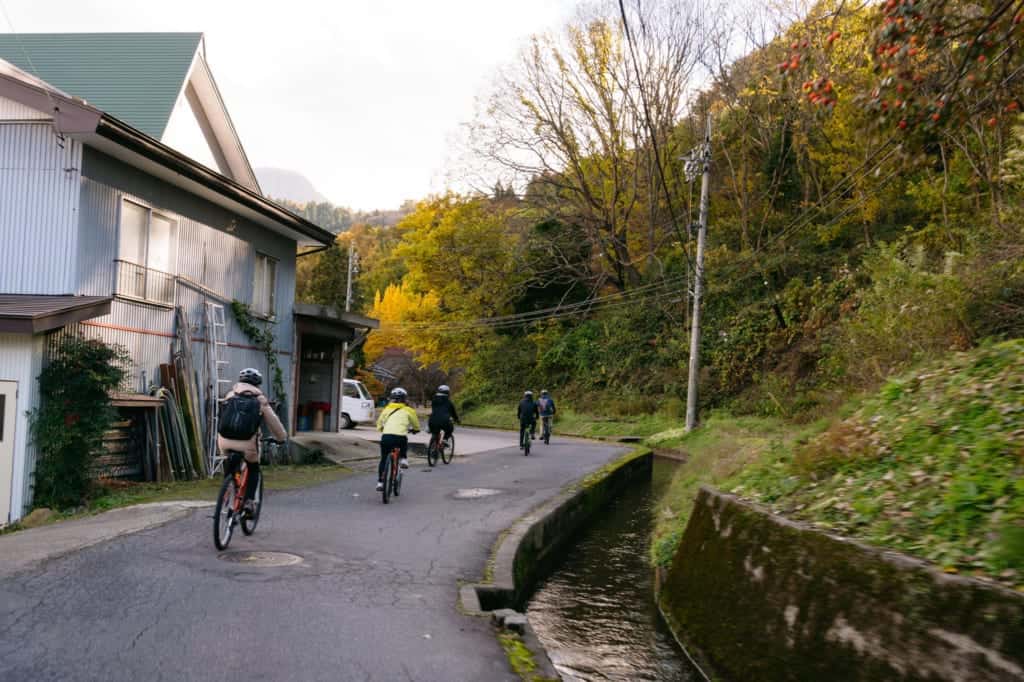
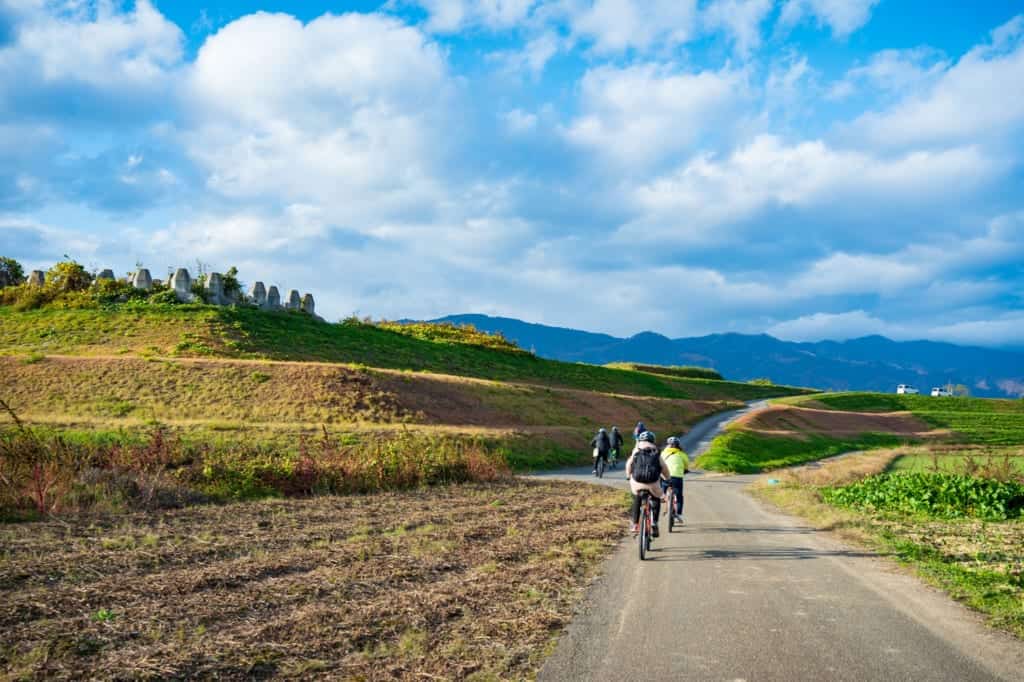











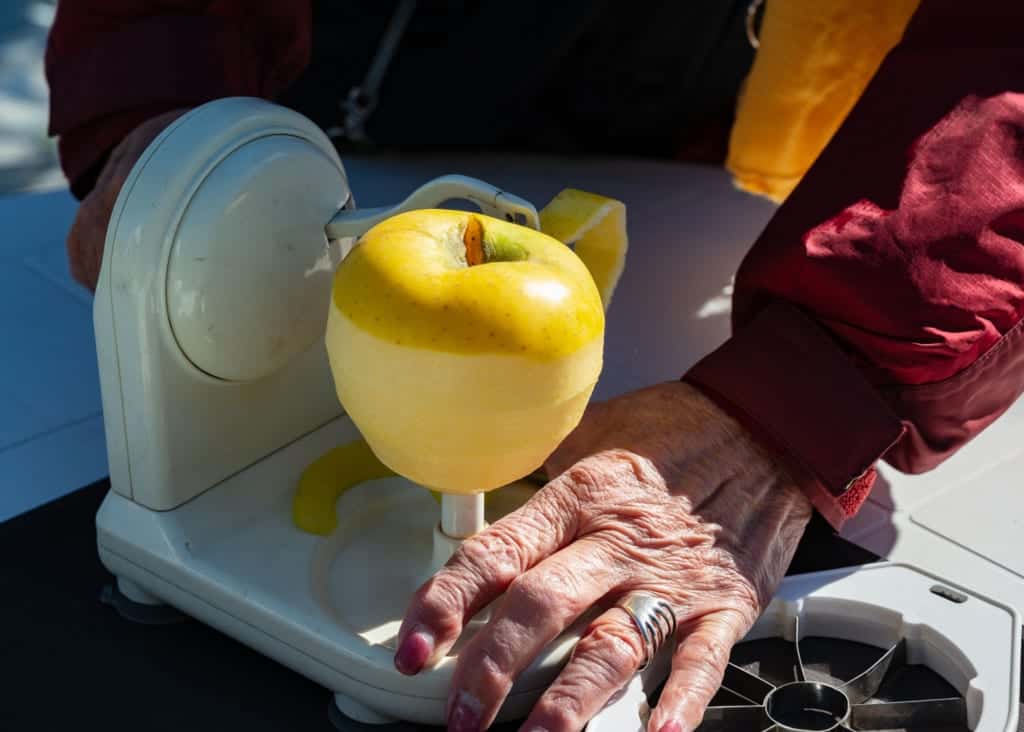


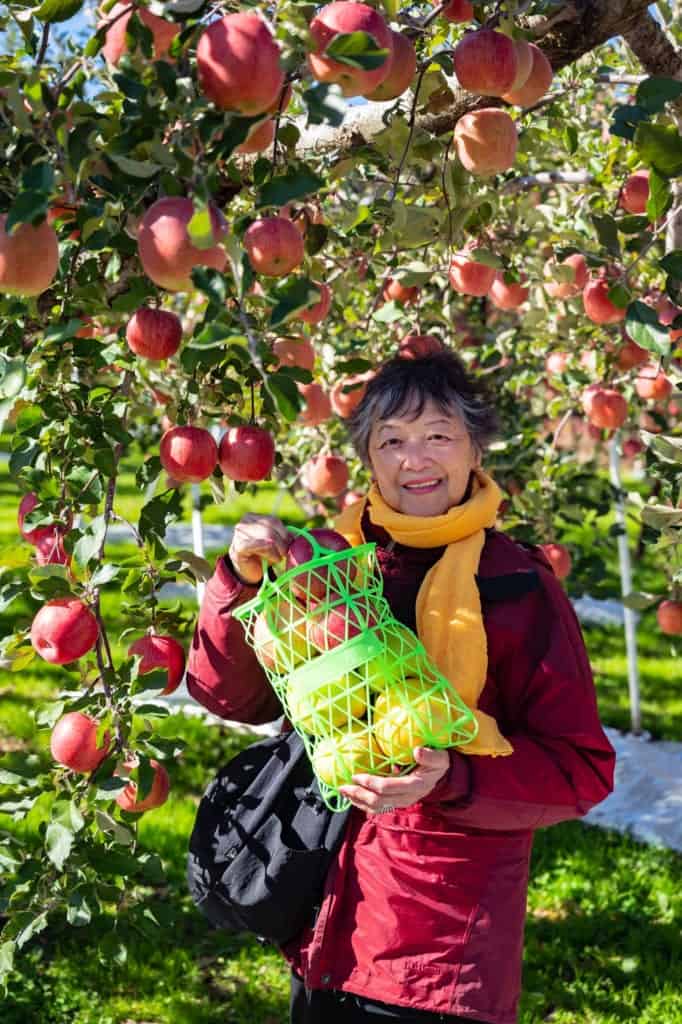




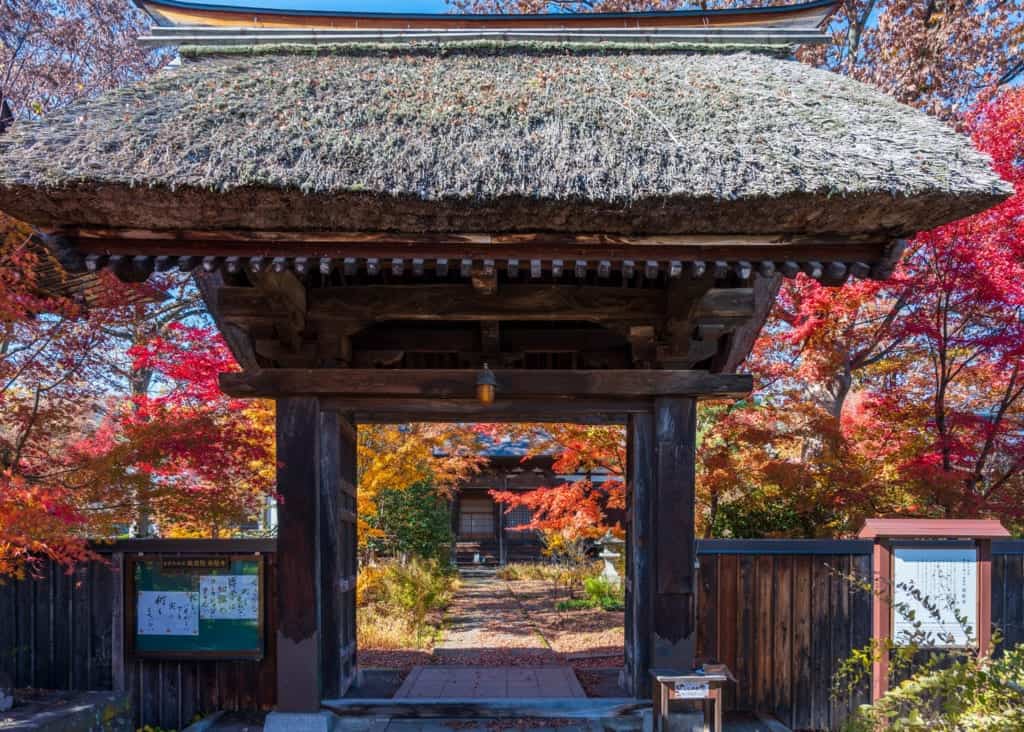











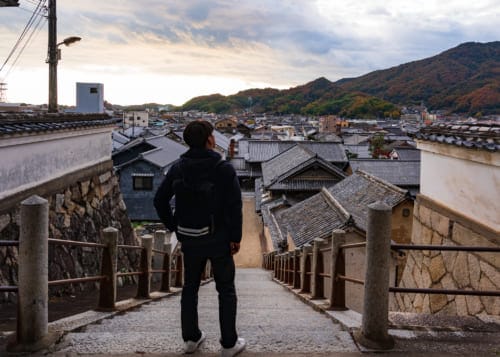




No Comments yet!